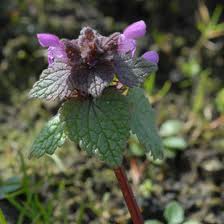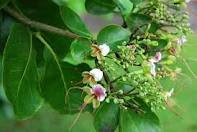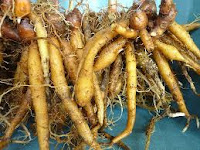This plant was known by different names in Culpeper’s time (17th century) and he has this to say of it:-
“Names. The hot Arssmart is called also water-peper, or culrage. The mild Arssmart is called dead Arssmart percicaria, or peach-wort, because the leaves are so like the leaves of a peach-tree; it is also called plumbago.”
Culpeper’s “water peper” is Polygonum hydropiper, Lady’s Thumb is the “mild arssmart”.
 It is a native of
It is a native of Despite their weed status and their introduction to the North American continent the Native Americans found uses for these plants and soaked legs and feet that were rheumatic in a strong decoction of the arssmart for pain relief. They also used the leaves crushed, on poison ivy rashes. A decoction of the whole plant mixed with flour to a thick paste was also used for rheumatic pains. The leaves and flowering tops were used in an infusion or tisane for stomach problems and to get rid of gravel in the organs. However, this is no longer advised as the plant contains oxalic acid, although this can usually be removed from the plant by boiling.
“It is of a cooling and drying quality and very effectual for putrified ulcers in man or beast, to kill worms and cleanse the putrified places. The juice thereof dropped in, or otherwise applied, consumeth all cold swellings, and dissolveth the congealed blood of bruises by strokes, falls, &c. A piece of the root, or some of the seeds bruised, and held to an aching-tooth, taketh away the pain. The leaves bruised and laid to the joint that hath a felon thereon taketh it away. The juice destroyeth worms in the ears, being dropped into them; if the hot Arssmart be strewed in a chamber, it will soon kill all the fleas; and the herb or juice of the cold Arssmart, put to a horse or other cattle's sores, will drive away the fly in the hottest time of summer; a good handful of the hot biting Arssmart put under a horse's saddle, will make him travel the better, although he were half tired before. The mild Arssmart is good against all imposthumes and inflammations at the beginning, and to heal green wounds.”
This is of course the wisdom of a 17th century herbalist.
 The leaves and seeds are edible, but should not be eaten in large quantities. The leaves are said to taste similar to lettuce. The whole plant makes a yellow dye when used with an alum mordant.
The leaves and seeds are edible, but should not be eaten in large quantities. The leaves are said to taste similar to lettuce. The whole plant makes a yellow dye when used with an alum mordant. The plant has been found to have anti-fungal properties, bearing out its traditional use in Argentina
However not many studies have been carried out on this plant. It could be that other traditional uses will be validated in the future.
































